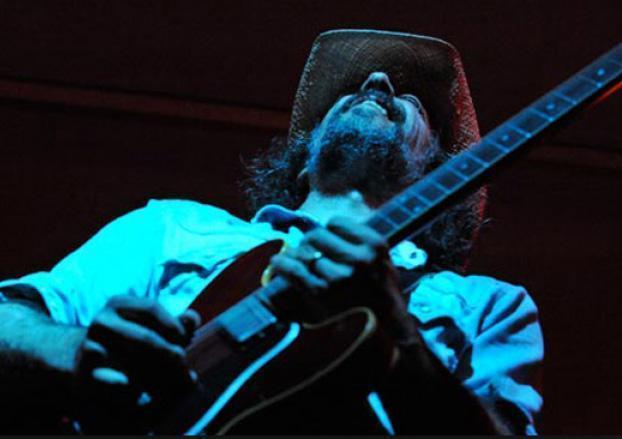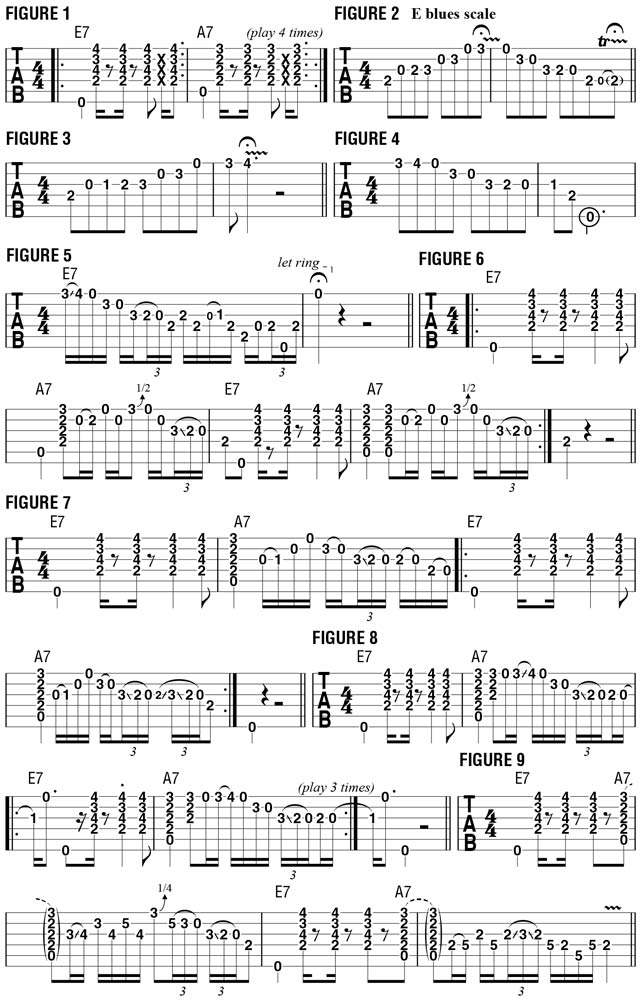Focusing on Specific Fretboard Positions for Rhythm and Soloing

Focusing on specific fretboard positions for rhythm and soloing As I stated last month, the are many different ways in which guitar players can navigate chord resolutions and likewise allude to them via single-note melodic lines.
Students have often asked me how to “break free” from the most commonly used chord voicings and scale-based licks in order to play with more musical freedom and variety. A great way to initiate this type of investigation is to take an alternating two-chord vamp—like those heard on well-known songs like “Feeling Alright,” “Blue Sky,” “Turn on Your Love Light,” “Midnight Hour” and “I’d Rather Go Blind”—and move it to different areas of the fretboard, playing the chordal parts and the obbligato solo figures in each new position.
Last month, we looked at an E7-A7 vamp, as played in fifth position with accompanying solo lines that remained rooted in that position. This month, we’ll move down to second position and investigate the chord voicings, scale patterns and licks we can explore on this area of the fretboard.
FIGURE 1 illustrates a basic I-IV (one-to-four) alternating two-chord vamp in the key of E, beginning on the I (one) chord, E7 and moving to the IV (four) chord, A7 repeatedly. Both chords are played in second position, and I use close voicing and voice-leading in the movement between them: E7 is sounded with the notes E, B, D and G#, in ascending order. To switch to A7, the E note remains while B moves down two frets to A, D moves down one fret to C# and G# moves down one fret to G.
Notice in particular the one-fret movement on the top two strings when switching from E7 to A7. Both chords are strummed in a syncopated manner wherein upbeat accents are highlighted. Before adding some single-note lines to the vamp, let’s look at two scales in this position: FIGURE 2 depicts the E blues scale (E G A Bb B D), as played in “open” position; FIGURES 3 and 4 illustrates this scale with the inclusion of G#, the major third. I refer to this scale as the “E dominant scale.”
When ascending, always play G natural before G#; when descending, you should also play G natural before G#, as this serves to strengthen the connection between the scale and the E7 chord. FIGURE 5 offers an example of a simple lick that indicates the distinct melodic value of adding G# to the E blues scale. The idea now is to devise as many ways as you can to add improvised melodic lines to the rhythm part, by first laying down the E7 chord in a steady rhythm and then adding a brief solo phrase immediately after the A7 is stated.
FIGURES 6–9 illustrate four examples of how to build effective solo phrases within this rhythmic idea. Once you have a handle on these lines, begin crafting your own.

Get The Pick Newsletter
All the latest guitar news, interviews, lessons, reviews, deals and more, direct to your inbox!
Guitar World Associate Editor Andy Aledort is recognized worldwide for his vast contributions to guitar instruction, via his many best-selling instructional DVDs, transcription books and online lessons. Andy is a regular contributor to Guitar World and Truefire, and has toured with Dickey Betts of the Allman Brothers, as well as participating in several Jimi Hendrix Tribute Tours.
“There are so many sounds to be discovered when you get away from using a pick”: Jared James Nichols shows you how to add “snap, crackle and pop” to your playing with banjo rolls and string snaps
Don't let chord inversions bamboozle you. It's simply the case of shuffling the notes around








![Joe Bonamassa [left] wears a deep blue suit and polka-dotted shirt and plays his green refin Strat; the late Irish blues legend Rory Gallagher [right] screams and inflicts some punishment on his heavily worn number one Stratocaster.](https://cdn.mos.cms.futurecdn.net/cw28h7UBcTVfTLs7p7eiLe.jpg)


